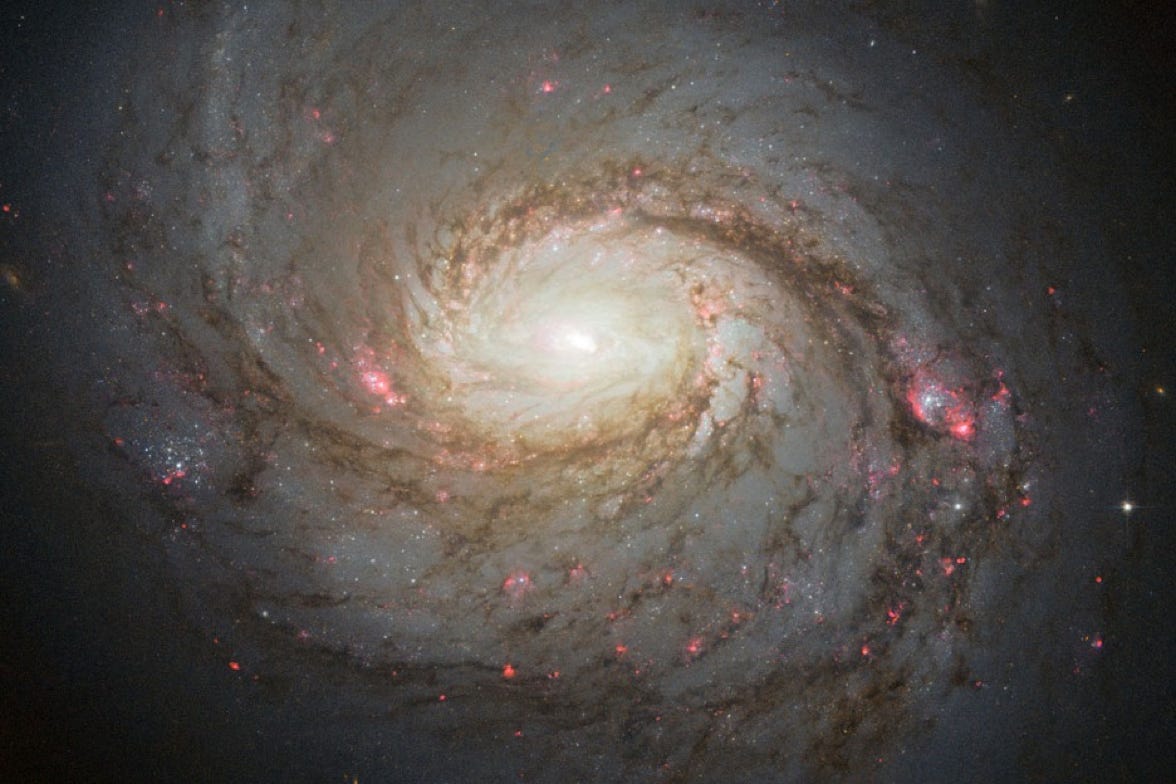by drd. Alice Mihaela Păun
Neutrinos, also known as astrophysical messengers due to the vast distances they can travel through the Universe without interacting with matter, are extremely difficult to detect. For the detection of these particles, it was necessary to construct a neutrino telescope with a volume of 1 km³ and place it deep within the ice at the South Pole - the IceCube Neutrino Observatory [https://icecube.wisc.edu/]. Neutrinos that interact near the detector produce relativistic particles that generate luminous events, which can be "seen" by the "eyes" of the instrumentation (optical modules).
The data collected by IceCube concerning the galaxy NGC 1086 [1], also known as the Squid Galaxy, indicate a flux of very high-energy neutrinos (TeV), accompanied by an extremely weak flux of gamma rays (GeV) observed by the Fermi [2] and MAGIC [3] telescopes. NGC 1086 is an active galaxy with a central region (AGN – Active Galactic Nucleus) that contains a supermassive black hole and emits matter and energy in the form of jets. The discrepancy between the two particle fluxes represents an intriguing puzzle for researchers, because such active galactic nuclei typically emit neutrino and gamma-ray fluxes of comparable energies, resulting from interactions between protons and photons [4].
A recent article [5] offers a bold explanation for the neutrino puzzle observed from AGNs, which aligns with current observations: a new mechanism for producing high-energy neutrinos.
The source of the neutrino flux could be the corona — a region of dense, hot plasma surrounding the central supermassive black hole. The most abundant elements in the Universe are hydrogen and helium. Therefore, if a helium nucleus is accelerated in the jets of a supermassive black hole, it can collide with ultraviolet photons and "break apart", releasing its two protons and two neutrons [4]. Protons have a long lifetime, but neutrons are unstable and decay into high-energy neutrinos without producing gamma rays. The electrons generated in the decay interact with radiation fields and produce gamma rays that match the observed data.
The results of this study help us better understand how matter jets in active galaxies work and how high-energy neutrinos can be produced without a corresponding flux of gamma rays.

Galaxia Messier 77
Sursa foto: ESA/Hubble & NASA, L. C. Ho, D. Thilker